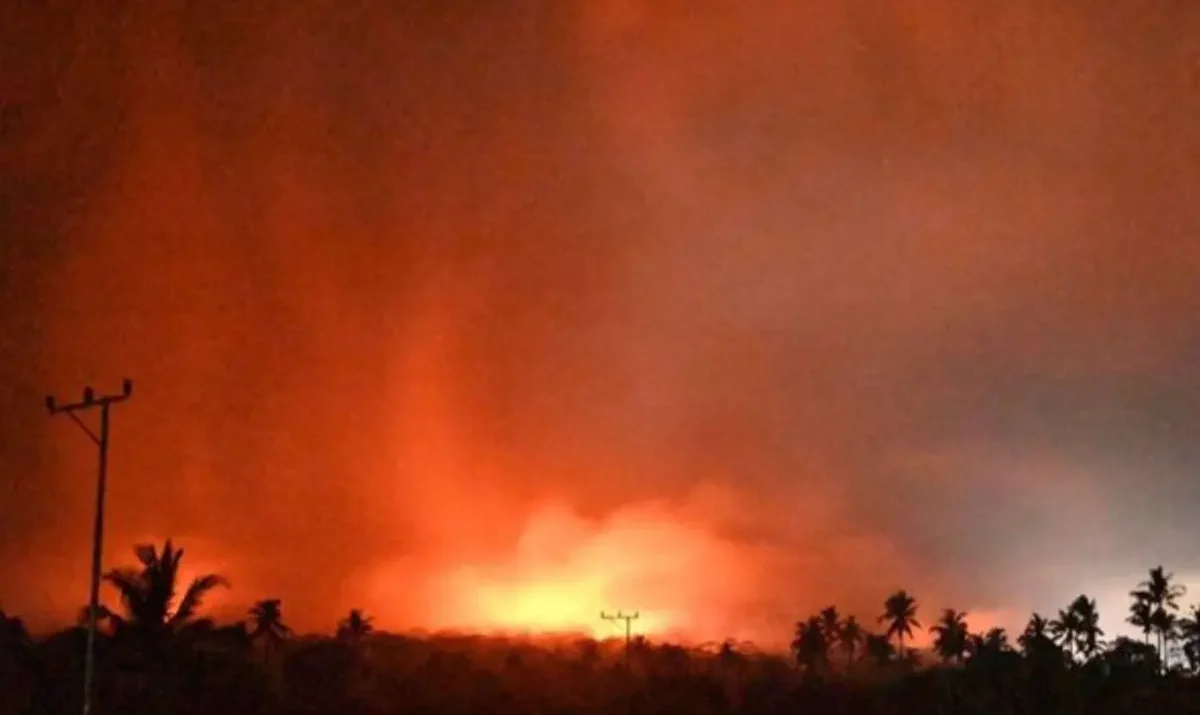A deadly eruption from Mount Lewotobi Laki-laki on Flores Island, Indonesia, has resulted in the tragic deaths of at least 10 people, with many others forced to flee as the volcano spewed molten lava and debris over surrounding communities. Local authorities confirmed that the eruption began late Sunday, intensifying in the early hours of Monday and covering villages within a 4-kilometer radius in ash and fire.
The Indonesian Center for Volcanology and Geological Disaster Mitigation (PVMG) raised the alert level to its highest, prompting mandatory evacuations for residents living within a 7-kilometer radius of the volcanic crater. Heronimus Lamawuran, a local official, stated that evacuation efforts began at dawn, relocating affected individuals to safer areas approximately 20 kilometers away from the disaster site.
Visuals from the scene revealed widespread devastation—burning homes, roads blanketed in volcanic ash, and villagers frantically seeking safety, some visibly distressed with ash coating their clothing and faces. Flames were seen dangerously close to residential areas, emphasizing the scale and ferocity of the disaster.
Authorities have declared a state of emergency for the next 58 days, enabling the Indonesian government to expedite aid to approximately 10,000 people impacted by the eruption. The declaration highlights the severity of the situation and sets the stage for coordinated relief efforts, aimed at mitigating further damage and providing necessary support for displaced residents.
The eruption’s immediate consequences have been severe for local agriculture and the regional economy. Many residents, especially cashew farmers, have had to abandon their homes and fields, watching as ash and debris threaten their crops and livelihoods.
Adding to the urgency, the Indonesian disaster agency has issued warnings about potential flash floods and cold lava flows, which occur when volcanic material mixes with rainwater. With rainfall expected, the situation poses additional risks to already vulnerable communities.
Mount Lewotobi Laki-laki’s continued activity disrupts the already fragile balance of life for those living nearby. Indonesia’s location along the Pacific “Ring of Fire” makes it one of the most seismically active regions in the world, home to approximately 130 active volcanoes. Despite the ever-present danger, many communities remain near these volcanoes, drawn by the fertile soil that enriches their agricultural prospects.
As Indonesia navigates the aftermath of this latest volcanic disaster, the resilience of its people will once again be tested. Emergency teams, local officials, and volunteers are expected to continue round-the-clock efforts to ensure safety, provide shelter, and restore stability to the affected regions.






